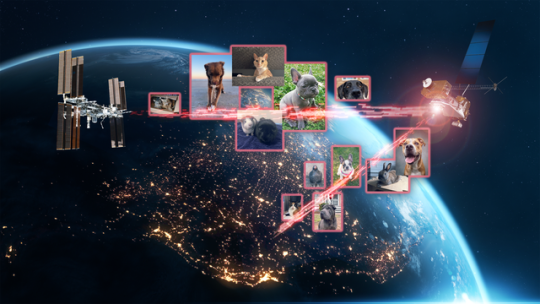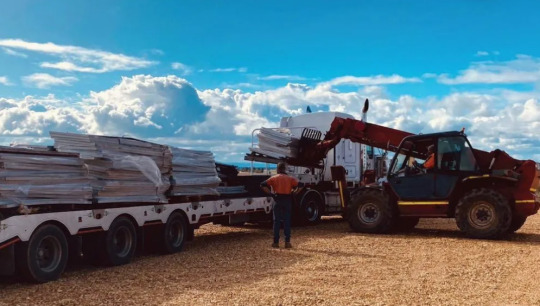#Robust Data Governance
Explore tagged Tumblr posts
Text
Discover the pivotal role of data governance in DevOps evolution. Build stronger foundations for compliance, security, and efficiency.
#Data Governance Framework#Devops Environment#Devops Framework#Devops Methodologies#Devops-Driven Data Governance#Robust Data Governance#Software Development Consulting Company#Stage Of Product Development
0 notes
Text
Discover how robust data governance shapes DevOps evolution, ensuring secure foundations & compliance. Uncover insights now!
#Data Governance Framework#Devops Environment#Devops Framework#Devops Methodologies#Devops-Driven Data Governance#Robust Data Governance#Software Development Consulting Company#Stage Of Product Development
0 notes
Text
Discover how robust data governance shapes DevOps evolution, ensuring secure foundations & compliance. Uncover insights now!
#Data Governance Framework#Devops Environment#Devops Framework#Devops Methodologies#Devops-Driven Data Governance#Robust Data Governance#Software Development Consulting Company#Stage Of Product Development
0 notes
Text
Discover how robust data governance shapes DevOps evolution, ensuring secure foundations & compliance. Uncover insights now!
#Data Governance Framework#Devops Environment#Devops Framework#Devops Methodologies#Devops-Driven Data Governance#Robust Data Governance#Software Development Consulting Company#Stage Of Product Development
0 notes
Text
All-Star Moments in Space Communications and Navigation
How do we get information from missions exploring the cosmos back to humans on Earth? Our space communications and navigation networks – the Near Space Network and the Deep Space Network – bring back science and exploration data daily.
Here are a few of our favorite moments from 2024.

1. Hip-Hop to Deep Space
The stars above and on Earth aligned as lyrics from the song “The Rain (Supa Dupa Fly)” by hip-hop artist Missy Elliott were beamed to Venus via NASA’s Deep Space Network. Using a 34-meter (112-foot) wide Deep Space Station 13 (DSS-13) radio dish antenna, located at the network’s Goldstone Deep Space Communications Complex in California, the song was sent at 10:05 a.m. PDT on Friday, July 12 and traveled about 158 million miles from Earth to Venus — the artist’s favorite planet. Coincidentally, the DSS-13 that sent the transmission is also nicknamed Venus!

NASA's PACE mission transmitting data to Earth through NASA's Near Space Network.
2. Lemme Upgrade You
Our Near Space Network, which supports communications for space-based missions within 1.2 million miles of Earth, is constantly enhancing its capabilities to support science and exploration missions. Last year, the network implemented DTN (Delay/Disruption Tolerant Networking), which provides robust protection of data traveling from extreme distances. NASA’s PACE (Plankton, Aerosol, Cloud, ocean Ecosystem) mission is the first operational science mission to leverage the network’s DTN capabilities. Since PACE’s launch, over 17 million bundles of data have been transmitted by the satellite and received by the network’s ground station.

A collage of the pet photos sent over laser links from Earth to LCRD and finally to ILLUMA-T (Integrated LCRD Low Earth Orbit User Modem and Amplifier Terminal) on the International Space Station. Animals submitted include cats, dogs, birds, chickens, cows, snakes, and pigs.
3. Who Doesn’t Love Pets?
Last year, we transmitted hundreds of pet photos and videos to the International Space Station, showcasing how laser communications can send more data at once than traditional methods. Imagery of cherished pets gathered from NASA astronauts and agency employees flowed from the mission ops center to the optical ground stations and then to the in-space Laser Communications Relay Demonstration (LCRD), which relayed the signal to a payload on the space station. This activity demonstrated how laser communications and high-rate DTN can benefit human spaceflight missions.

4K video footage was routed from the PC-12 aircraft to an optical ground station in Cleveland. From there, it was sent over an Earth-based network to NASA’s White Sands Test Facility in Las Cruces, New Mexico. The signals were then sent to NASA’s Laser Communications Relay Demonstration spacecraft and relayed to the ILLUMA-T payload on the International Space Station.
4. Now Streaming
A team of engineers transmitted 4K video footage from an aircraft to the International Space Station and back using laser communication signals. Historically, we have relied on radio waves to send information to and from space. Laser communications use infrared light to transmit 10 to 100 times more data than radio frequency systems. The flight tests were part of an agency initiative to stream high-bandwidth video and other data from deep space, enabling future human missions beyond low-Earth orbit.

The Near Space Network provides missions within 1.2 million miles of Earth with communications and navigation services.
5. New Year, New Relationships
At the very end of 2024, the Near Space Network announced multiple contract awards to enhance the network’s services portfolio. The network, which uses a blend of government and commercial assets to get data to and from spacecraft, will be able to support more missions observing our Earth and exploring the cosmos. These commercial assets, alongside the existing network, will also play a critical role in our Artemis campaign, which calls for long-term exploration of the Moon.

On Monday, Oct. 14, 2024, at 12:06 p.m. EDT, a SpaceX Falcon Heavy rocket carrying NASA’s Europa Clipper spacecraft lifts off from Launch Complex 39A at NASA’s Kennedy Space Center in Florida.
6. 3, 2, 1, Blast Off!
Together, the Near Space Network and the Deep Space Network supported the launch of Europa Clipper. The Near Space Network provided communications and navigation services to SpaceX’s Falcon Heavy rocket, which launched this Jupiter-bound mission into space! After vehicle separation, the Deep Space Network acquired Europa Clipper’s signal and began full mission support. This is another example of how these networks work together seamlessly to ensure critical mission success.

Engineer Adam Gannon works on the development of Cognitive Engine-1 in the Cognitive Communications Lab at NASA’s Glenn Research Center.
7. Make Way for Next-Gen Tech
Our Technology Education Satellite program organizes collaborative missions that pair university students with researchers to evaluate how new technologies work on small satellites, also known as CubeSats. In 2024, cognitive communications technology, designed to enable autonomous space communications systems, was successfully tested in space on the Technology Educational Satellite 11 mission. Autonomous systems use technology reactive to their environment to implement updates during a spaceflight mission without needing human interaction post-launch.

A first: All six radio frequency antennas at the Madrid Deep Space Communication Complex, part of NASA’s Deep Space Network (DSN), carried out a test to receive data from the agency’s Voyager 1 spacecraft at the same time.
8. Six Are Better Than One
On April 20, 2024, all six radio frequency antennas at the Madrid Deep Space Communication Complex, part of our Deep Space Network, carried out a test to receive data from the agency’s Voyager 1 spacecraft at the same time. Combining the antennas’ receiving power, or arraying, lets the network collect the very faint signals from faraway spacecraft.
Here’s to another year connecting Earth and space.
Make sure to follow us on Tumblr for your regular dose of space!
1K notes
·
View notes
Text
China hacked Verizon, AT&T and Lumen using the FBI’s backdoor

On OCTOBER 23 at 7PM, I'll be in DECATUR, presenting my novel THE BEZZLE at EAGLE EYE BOOKS.

State-affiliated Chinese hackers penetrated AT&T, Verizon, Lumen and others; they entered their networks and spent months intercepting US traffic – from individuals, firms, government officials, etc – and they did it all without having to exploit any code vulnerabilities. Instead, they used the back door that the FBI requires every carrier to furnish:
https://www.wsj.com/tech/cybersecurity/u-s-wiretap-systems-targeted-in-china-linked-hack-327fc63b?st=C5ywbp&reflink=desktopwebshare_permalink
In 1994, Bill Clinton signed CALEA into law. The Communications Assistance for Law Enforcement Act requires every US telecommunications network to be designed around facilitating access to law-enforcement wiretaps. Prior to CALEA, telecoms operators were often at pains to design their networks to resist infiltration and interception. Even if a telco didn't go that far, they were at the very least indifferent to the needs of law enforcement, and attuned instead to building efficient, robust networks.
Predictably, CALEA met stiff opposition from powerful telecoms companies as it worked its way through Congress, but the Clinton administration bought them off with hundreds of millions of dollars in subsidies to acquire wiretap-facilitation technologies. Immediately, a new industry sprang into being; companies that promised to help the carriers hack themselves, punching back doors into their networks. The pioneers of this dirty business were overwhelmingly founded by ex-Israeli signals intelligence personnel, though they often poached senior American military and intelligence officials to serve as the face of their operations and liase with their former colleagues in law enforcement and intelligence.
Telcos weren't the only opponents of CALEA, of course. Security experts – those who weren't hoping to cash in on government pork, anyways – warned that there was no way to make a back door that was only useful to the "good guys" but would keep the "bad guys" out.
These experts were – then as now – dismissed as neurotic worriers who simultaneously failed to understand the need to facilitate mass surveillance in order to keep the nation safe, and who lacked appropriate faith in American ingenuity. If we can put a man on the moon, surely we can build a security system that selectively fails when a cop needs it to, but stands up to every crook, bully, corporate snoop and foreign government. In other words: "We have faith in you! NERD HARDER!"
NERD HARDER! has been the answer ever since CALEA – and related Clinton-era initiatives, like the failed Clipper Chip program, which would have put a spy chip in every computer, and, eventually, every phone and gadget:
https://en.wikipedia.org/wiki/Clipper_chip
America may have invented NERD HARDER! but plenty of other countries have taken up the cause. The all-time champion is former Australian Prime Minister Malcolm Turnbull, who, when informed that the laws of mathematics dictate that it is impossible to make an encryption scheme that only protects good secrets and not bad ones, replied, "The laws of mathematics are very commendable, but the only law that applies in Australia is the law of Australia":
https://www.zdnet.com/article/the-laws-of-australia-will-trump-the-laws-of-mathematics-turnbull/
CALEA forced a redesign of the foundational, physical layer of the internet. Thankfully, encryption at the protocol layer – in the programs we use – partially counters this deliberately introduced brittleness in the security of all our communications. CALEA can be used to intercept your communications, but mostly what an attacker gets is "metadata" ("so-and-so sent a message of X bytes to such and such") because the data is scrambled and they can't unscramble it, because cryptography actually works, unlike back doors. Of course, that's why governments in the EU, the US, the UK and all over the world are still trying to ban working encryption, insisting that the back doors they'll install will only let the good guys in:
https://pluralistic.net/2023/03/05/theyre-still-trying-to-ban-cryptography/
Any back door can be exploited by your adversaries. The Chinese sponsored hacking group know as Salt Typhoon intercepted the communications of hundreds of millions of American residents, businesses, and institutions. From that position, they could do NSA-style metadata-analysis, malware injection, and interception of unencrypted traffic. And they didn't have to hack anything, because the US government insists that all networking gear ship pre-hacked so that cops can get into it.
This isn't even the first time that CALEA back doors have been exploited by a hostile foreign power as a matter of geopolitical skullduggery. In 2004-2005, Greece's telecommunications were under mass surveillance by US spy agencies who wiretapped Greek officials, all the way up to the Prime Minister, in order to mess with the Greek Olympic bid:
https://en.wikipedia.org/wiki/Greek_wiretapping_case_2004%E2%80%9305
This is a wild story in so many ways. For one thing, CALEA isn't law in Greece! You can totally sell working, secure networking gear in Greece, and in many other countries around the world where they have not passed a stupid CALEA-style law. However the US telecoms market is so fucking huge that all the manufacturers build CALEA back doors into their gear, no matter where it's destined for. So the US has effectively exported this deliberate insecurity to the whole planet – and used it to screw around with Olympic bids, the most penny-ante bullshit imaginable.
Now Chinese-sponsored hackers with cool names like "Salt Typhoon" are traipsing around inside US telecoms infrastructure, using the back doors the FBI insisted would be safe.

Tor Books as just published two new, free LITTLE BROTHER stories: VIGILANT, about creepy surveillance in distance education; and SPILL, about oil pipelines and indigenous landback.


If you'd like an essay-formatted version of this post to read or share, here's a link to it on pluralistic.net, my surveillance-free, ad-free, tracker-free blog:
https://pluralistic.net/2024/10/07/foreseeable-outcomes/#calea

Image: Kris Duda, modified https://www.flickr.com/photos/ahorcado/5433669707/
CC BY 2.0 https://creativecommons.org/licenses/by/2.0/
#pluralistic#calea#lawful interception#backdoors#keys under doormats#cold war 2.0#foreseeable outcomes#jerry berman#greece#olympics#snowden
400 notes
·
View notes
Text
Dandelion News - March 8-14
Like these weekly compilations? Tip me at $kaybarr1735 or check out my Dandelion Doodles!
1. Caribbean reef sharks rebound in Belize with shark fishers’ help

“Caribbean reef shark populations have rebounded beyond previous levels, more than tripling at both Turneffe and Lighthouse atolls[…. The recovery] arose from a remarkable synergy among shark fishers, marine scientists and management authorities[….]”
2. Landmark Ruling on Uncontacted Indigenous Peoples’ Rights Strikes at Oil Industry

“[T]he Ecuadorian government [must] ensure any future expansion or renewal of oil operations does not impact Indigenous peoples living in voluntary isolation. [… E]ffective measures must be adopted to prevent serious or irreversible damage, which in this case would be the contact of these isolated populations,” said the opinion[….]”
3. America's clean-energy industry is growing despite Trump's attacks. At least for now

“The buildout of big solar and battery plants is expected to hit an all-time high in 2025, accounting for 81% of new power generation[….] The industry overall has boomed thanks to falling technology costs, federal tax incentives and state renewable-energy mandates.”
4. Study says endangered Asian elephant population in Cambodia is more robust than previously thought

“A genetic study of Asian elephants […] reveals a larger and more robust population than previously thought, raising hopes the endangered species could slowly recover. […] “With sufficient suitable habitat remaining in the region, the population has the potential to grow if properly protected,” the report concludes.”
5. Scientists are engineering a sense of touch for people who are paralyzed

“[Engineers are] testing a system that can restore both movement and sensation in a paralyzed hand. [… A]fter more than a year of therapy and spinal stimulation, [… h]is increased strength and mobility allow him to do things like pet his dog. And when he does, he says, "I can feel a little bit of the fur."“
6. Florida is now a solar superpower. Here’s how it happened.

“In a first, Florida vaulted past California last year in terms of new utility-scale solar capacity plugged into its grid. It built 3 gigawatts of large-scale solar in 2024, making it second only to Texas. And in the residential solar sector, Florida continued its longtime leadership streak.”
7. Rare frog rediscovered after 130 years

“The researchers discovered two populations of the frog[….] "The rediscovery of A. vittatus allowed us to obtain, more than a century after its description, the first biological and ecological data on the species.” [… S]hedding light on where and how they live is the first step in protecting them.”
8. Community composting programs show promise in reducing household food waste

“The program [increased awareness and reduced household waste, and] also addressed common barriers to home composting, including pest concerns and technical challenges that had previously discouraged participants from composting independently.”
9. Pioneering Australian company marks new milestone on “mission” to upcycle end-of-life solar panels

“[…] SolarCrete – a pre-mixed concrete made using glass recovered from used solar panels – will form part of the feasibility study[….] A second stage would then focus on the extraction of high value materials[…] for re-use in PV and battery grade silicon, [… and] electrical appliances[….]”
10. Beavers Just Saved The Czech Government Big Bucks

“The aim was to build a dam to prevent sediment and acidic water from two nearby ponds from spilling over, but the project was delayed for years due to negotiations over land use[….] Not only did the industrious rodents complete the work faster than the humans had intended, they also doubled the size of the wetland area that was initially planned.”
March 1-7 news here | (all credit for images and written material can be found at the source linked; I don’t claim credit for anything but curating.)
#hopepunk#good news#shark#fishing#nature#ecuador#first nations#oil drilling#clean energy#solar energy#solar power#elephants#elephant#conservation#animals#science#medicine#paralyzed#florida#solar panels#frogs#endangered species#endangered#compost#community#australia#recycling#beaver#habitat restoration#beaver dam
148 notes
·
View notes
Text
Take, as a particularly egregious example, what is perhaps the most widely reported economic indicator: unemployment. Known to experts as the U-3, the number misleads in several ways. First, it counts as employed the millions of people who are unwillingly under-employed — that is, people who, for example, work only a few hours each week while searching for a full-time job. Second, it does not take into account many Americans who have been so discouraged that they are no longer trying to get a job. Finally, the prevailing statistic does not account for the meagerness of any individual’s income. Thus you could be homeless on the streets, making an intermittent income and functionally incapable of keeping your family fed, and the government would still count you as “employed.” I don’t believe those who went into this past election taking pride in the unemployment numbers understood that the near-record low unemployment figures — the figure was a mere 4.2 percent in November — counted homeless people doing occasional work as “employed.” But the implications are powerful. If you filter the statistic to include as unemployed people who can’t find anything but part-time work or who make a poverty wage (roughly $25,000), the percentage is actually 23.7 percent. In other words, nearly one of every four workers is functionally unemployed in America today — hardly something to celebrate.
211 notes
·
View notes
Text
Interior Department Announces New Guidance to Honor and Elevate Hawaiian Language

"In commemoration of Mahina ʻŌlelo Hawaiʻi, or Hawaiian Language Month, and in recognition of its unique relationship with the Native Hawaiian Community, the Department of the Interior today announced new guidance on the use of the Hawaiian language.
A comprehensive new Departmental Manual chapter underscores the Department’s commitment to further integrating Indigenous Knowledge and cultural practices into conservation stewardship.
“Prioritizing the preservation of the Hawaiian language and culture and elevating Indigenous Knowledge is central to the Biden-Harris administration's work to meet the unique needs of the Native Hawaiian Community,” said Secretary Deb Haaland. “As we deploy historic resources to Hawaiʻi from President Biden’s Investing in America agenda, the Interior Department is committed to ensuring our internal policies and communications use accurate language and data."
Department bureaus and offices that engage in communication with the Native Hawaiian Community or produce documentation addressing places, resources, actions or interests in Hawaiʻi will use the new guidance on ‘ōlelo Hawaiʻi (Hawaiian language) for various identifications and references, including flora and fauna, cultural sites, geographic place names, and government units within the state. The guidance recognizes the evolving nature of ‘ōlelo Hawaiʻi and acknowledges the absence of a single authoritative source. While the Hawaiian Dictionary (Pukui & Elbert 2003) is designated as the baseline standard for non-geographic words and place names, Department bureaus and offices are encouraged to consult other standard works, as well as the Board on Geographic Names database.
Developed collaboratively and informed by ʻōlelo Hawaiʻi practitioners, instructors and advocates, the new guidance emerged from virtual consultation sessions and public comment in 2023 with the Native Hawaiian Community.
The new guidance aligns with the Biden-Harris administration’s commitment to strengthening relationships with the Native Hawaiian Community through efforts such as the Kapapahuliau Climate Resilience Program and Hawaiian Forest Bird Keystone Initiative. During her trip to Hawaiʻi in June, Secretary Haaland emphasized recognizing and including Indigenous Knowledge, promoting co-stewardship, protecting sacred sites, and recommitting to meaningful and robust consultation with the Native Hawaiian Community."
-via US Department of the Interior press release, February 1, 2024
--
Note: I'm an editor so I have no idea whether this comes off like as big a deal as it potentially is. But it is potentially going to establish and massively accelerate the adoption of correctly written Native Hawaiian language, as determined by Native Hawaiians.
Basically US government communications, documentations, and "style guides" (sets of rules to follow about how to write/format/publish something, etc.) can be incredibly influential, especially for topics where there isn't much other official guidance. This rule means that all government documents that mention Hawai'i, places in Hawai'i, Hawaiian plants and animals, etc. will have to be written the way Native Hawaiians say it should be written, and the correct way of writing Hawaiian conveys a lot more information about how the words are pronounced, too, which could spread correct pronunciations more widely.
It also means that, as far as the US government is concerned, this is The Correct Way to Write the Hawaiian Language. Which, as an editor who just read the guidance document, is super important. That's because you need the 'okina (' in words) and kahakō in order to tell apart sizeable sets of different words, because Hawaiian uses so many fewer consonants, they need more of other types of different sounds.
And the US government official policy on how to write Hawaiian is exactly what editors, publishers, newspapers, and magazines are going to look at, sooner or later, because it's what style guides are looking at. Style guides are the official various sets of rules that books/publications follow; they're also incredibly detailed - the one used for almost all book publishing, for example, the Chicago Manual of Style (CMoS), is over a thousand pages long.
One of the things that CMoS does is tell you the basic rules of and what specialist further sources they think you should use for writing different languages. They have a whole chapter dedicated to this. It's not that impressive on non-European languages yet, but we're due for a new edition (the 18th) of CMoS in the next oh two to four years, probably? Actually numbering wise they'd be due for one this year, except presumably they would've announced it by now if that was the case.
I'm expecting one of the biggest revisions to the 18th edition to add much more comprehensive guidance on non-Western languages. Considering how far we've come since 2017, when the last one was released, I'll be judging the shit out of them if they do otherwise. (And CMoS actually keep with the times decently enough.)
Which means, as long as there's at least a year or two for these new rules/spellings/orthographies to establish themselves before the next edition comes out, it's likely that just about every (legit) publisher will start using the new rules/spellings/orthographies.
And of course, it would expand much further from there.
#don't ask me about the magazine and newspaper half of this#bc I do Not know AP style#except the differences I'm annoyed at lol#ap doesn't respect the oxford comma#hawaii#hawaiʻi#language#orthography#linguistics#language stuff#hawaiian#native hawaiian#united states#publishing#book publishing#indigenous#indigineous people#indigenous languages#language revitalization#language resources#editorial
425 notes
·
View notes
Text
Ever since OpenAI released ChatGPT at the end of 2022, hackers and security researchers have tried to find holes in large language models (LLMs) to get around their guardrails and trick them into spewing out hate speech, bomb-making instructions, propaganda, and other harmful content. In response, OpenAI and other generative AI developers have refined their system defenses to make it more difficult to carry out these attacks. But as the Chinese AI platform DeepSeek rockets to prominence with its new, cheaper R1 reasoning model, its safety protections appear to be far behind those of its established competitors.
Today, security researchers from Cisco and the University of Pennsylvania are publishing findings showing that, when tested with 50 malicious prompts designed to elicit toxic content, DeepSeek’s model did not detect or block a single one. In other words, the researchers say they were shocked to achieve a “100 percent attack success rate.”
The findings are part of a growing body of evidence that DeepSeek’s safety and security measures may not match those of other tech companies developing LLMs. DeepSeek’s censorship of subjects deemed sensitive by China’s government has also been easily bypassed.
“A hundred percent of the attacks succeeded, which tells you that there’s a trade-off,” DJ Sampath, the VP of product, AI software and platform at Cisco, tells WIRED. “Yes, it might have been cheaper to build something here, but the investment has perhaps not gone into thinking through what types of safety and security things you need to put inside of the model.”
Other researchers have had similar findings. Separate analysis published today by the AI security company Adversa AI and shared with WIRED also suggests that DeepSeek is vulnerable to a wide range of jailbreaking tactics, from simple language tricks to complex AI-generated prompts.
DeepSeek, which has been dealing with an avalanche of attention this week and has not spoken publicly about a range of questions, did not respond to WIRED’s request for comment about its model’s safety setup.
Generative AI models, like any technological system, can contain a host of weaknesses or vulnerabilities that, if exploited or set up poorly, can allow malicious actors to conduct attacks against them. For the current wave of AI systems, indirect prompt injection attacks are considered one of the biggest security flaws. These attacks involve an AI system taking in data from an outside source—perhaps hidden instructions of a website the LLM summarizes—and taking actions based on the information.
Jailbreaks, which are one kind of prompt-injection attack, allow people to get around the safety systems put in place to restrict what an LLM can generate. Tech companies don’t want people creating guides to making explosives or using their AI to create reams of disinformation, for example.
Jailbreaks started out simple, with people essentially crafting clever sentences to tell an LLM to ignore content filters—the most popular of which was called “Do Anything Now” or DAN for short. However, as AI companies have put in place more robust protections, some jailbreaks have become more sophisticated, often being generated using AI or using special and obfuscated characters. While all LLMs are susceptible to jailbreaks, and much of the information could be found through simple online searches, chatbots can still be used maliciously.
“Jailbreaks persist simply because eliminating them entirely is nearly impossible—just like buffer overflow vulnerabilities in software (which have existed for over 40 years) or SQL injection flaws in web applications (which have plagued security teams for more than two decades),” Alex Polyakov, the CEO of security firm Adversa AI, told WIRED in an email.
Cisco’s Sampath argues that as companies use more types of AI in their applications, the risks are amplified. “It starts to become a big deal when you start putting these models into important complex systems and those jailbreaks suddenly result in downstream things that increases liability, increases business risk, increases all kinds of issues for enterprises,” Sampath says.
The Cisco researchers drew their 50 randomly selected prompts to test DeepSeek’s R1 from a well-known library of standardized evaluation prompts known as HarmBench. They tested prompts from six HarmBench categories, including general harm, cybercrime, misinformation, and illegal activities. They probed the model running locally on machines rather than through DeepSeek’s website or app, which send data to China.
Beyond this, the researchers say they have also seen some potentially concerning results from testing R1 with more involved, non-linguistic attacks using things like Cyrillic characters and tailored scripts to attempt to achieve code execution. But for their initial tests, Sampath says, his team wanted to focus on findings that stemmed from a generally recognized benchmark.
Cisco also included comparisons of R1’s performance against HarmBench prompts with the performance of other models. And some, like Meta’s Llama 3.1, faltered almost as severely as DeepSeek’s R1. But Sampath emphasizes that DeepSeek’s R1 is a specific reasoning model, which takes longer to generate answers but pulls upon more complex processes to try to produce better results. Therefore, Sampath argues, the best comparison is with OpenAI’s o1 reasoning model, which fared the best of all models tested. (Meta did not immediately respond to a request for comment).
Polyakov, from Adversa AI, explains that DeepSeek appears to detect and reject some well-known jailbreak attacks, saying that “it seems that these responses are often just copied from OpenAI’s dataset.” However, Polyakov says that in his company’s tests of four different types of jailbreaks—from linguistic ones to code-based tricks—DeepSeek’s restrictions could easily be bypassed.
“Every single method worked flawlessly,” Polyakov says. “What’s even more alarming is that these aren’t novel ‘zero-day’ jailbreaks—many have been publicly known for years,” he says, claiming he saw the model go into more depth with some instructions around psychedelics than he had seen any other model create.
“DeepSeek is just another example of how every model can be broken—it’s just a matter of how much effort you put in. Some attacks might get patched, but the attack surface is infinite,” Polyakov adds. “If you’re not continuously red-teaming your AI, you’re already compromised.”
57 notes
·
View notes
Text
Advantage India! As West moves away from China & Bangladesh, India’s apparel exports see big growth; $120 billion US market biggest opportunity

India's apparel exports are experiencing robust growth, driven by Western buyers seeking alternatives to Bangladesh and China. A significant 11.3% year-on-year increase in May signals a recovery from post-pandemic stagnation. Duty advantages over China and political instability in Bangladesh are further fueling this surge,
India is fast emerging as an alternate destination for reliable apparel sourcing for buyers in the West, as they move away from Bangladesh and China. India's garment exports maintained robust growth, showing an 11.3% year-on-year increase in May, according to data from the Confederation of Indian Textile Industry (CITI).This export growth provides relief to India's apparel sector, which experienced two consecutive years of difficulties following the pandemic. In the US market, India's share stands at $10 billion, whilst China maintains a $30 billion share.Buyers from developed countries are encouraging Indian manufacturers to increase production capacity and obtain necessary certifications. This push comes as India stands to benefit from duty advantages over China, resulting from reciprocal tariffs implemented during the Donald Trump administration.Advantage IndiaThe sector witnessed significant growth following political instability after Sheikh Hasina's government was removed in Bangladesh last August, according to an ET report. Export figures rose by 17.3% in September, followed by a 24.35% increase in October.Also Read | ‘Dramatic decline…watch out…’: China’s exports to US dip sharply amid Trump trade war; why India needs to be on the guard"There was a fall in India's apparel exports after Covid, as consumers bought fewer newer clothes due to excess purchases made during the Covid period.There was a period of stagnation or degrowth for about two years post Covid," said Sanjay K Jain, chairman, National Textile Committee, Indian Chamber of Commerce.The apparel sector began showing signs of improvement after the political changes and unrest in Bangladesh. Industry experts noted that due to the continuous nature of apparel production, buyers seek stability in their supply chains.Bangladesh's apparel sector has substantial manufacturing capabilities, enabling them to fulfil large orders quickly, which differs from Indian manufacturers.Also Read | Big win! China companies now exporting ‘Made in India’ smartphones & electronics to US, West Asia; notable shift for Chinese brandsThe export growth is expected to continue for Indian manufacturers due to duty advantages compared to China. "There is a big window of opportunity for Indian apparel exporters. The $120 billion US market is the biggest opportunity. All we need is to get the raw material at competitive rates," said Jain.Whilst apparel exports continue to rise, raw cotton imports are increasing as domestic prices exceed international rates. The projected cotton imports for India in 2024-25 are set to more than double compared to the previous year.The Cotton Association of India reports that the nation's cotton imports are expected to reach 3.3 million bales of 170 kilograms each in 2024-25, an increase from 1.52 million bales in the previous year.
25 notes
·
View notes
Text
Explore how data governance shapes DevOps evolution, fortifying foundations for seamless, compliant, and secure operations. Dive in now!
#Data Governance Framework#Devops Environment#Devops Framework#Devops Methodologies#Devops-Driven Data Governance#Robust Data Governance#Software Development Consulting Company#Stage Of Product Development
0 notes
Text
Unveil the backbone of DevOps evolution: Explore data governance's pivotal role for robust, secure, and agile operations.
#Data Governance Framework#Devops Environment#Devops Framework#Devops Methodologies#Devops-Driven Data Governance#Robust Data Governance#Software Development Consulting Company#Stage Of Product Development
0 notes
Text
Unveil the backbone of DevOps evolution: Explore data governance's pivotal role for robust, secure, and agile operations.
#Data Governance Framework#Devops Environment#Devops Framework#Devops Methodologies#Devops-Driven Data Governance#Robust Data Governance#Software Development Consulting Company#Stage Of Product Development
0 notes
Text
Unveil the backbone of DevOps evolution: Explore data governance's pivotal role for robust, secure, and agile operations.
#Data Governance Framework#Devops Environment#Devops Framework#Devops Methodologies#Devops-Driven Data Governance#Robust Data Governance#Software Development Consulting Company#Stage Of Product Development
0 notes
Text
European stock indices have caught up or outstripped Wall Street over the past six months. The S&P 500 is up nearly 6 per cent, matching the UK’s FTSE 100, but behind 9 per cent for France’s Cac 40 and more than 20 per cent for Germany’s Dax. The region-wide Stoxx Europe 600 has jumped 8 per cent. The euro on Wednesday touched its strongest level against the dollar since early November, after Germany announced a massive spending package to fund its military and infrastructure. That piled pressure on a greenback that has been weakening after a sequence of poor US economic data. “We have gone from ‘all roads lead to the US’ to seeing numerous cracks to US exceptionalism,” said Alain Bokobza, head of global asset allocation at Société Générale. “At the same time we have seen several game changers in Europe . . . so Europe is back on the agenda.” Tesla, which nearly doubled in value between the election and mid-December as chief executive and Trump backer Elon Musk became a central figure in the US administration, has now given up nearly all its post-election gains.
[...]
Eight years after his first presidential election victory initially sent investors rushing for safe havens before they bet he would be a boon for stocks, many fund managers are again wondering how they got Trump so wrong. This time around, US stocks have been hit by worsening economic data — including manufacturers reporting a steep decline in orders in February — growing concerns about tariffs and a sell-off in the all-important tech sector as the market asks whether the artificial intelligence revolution will prove as profitable as had been hoped. Despite a robust earnings season, this has prompted investors to turn away from American stocks, whose valuation had moved well above those of international peers and which in January had become their most pricey relative to government bonds in a generation. Charlie McElligott, a derivatives strategist at Nomura, said US tech stocks were now seen as a “source of funds” for investors wanting to buy European or Chinese stocks. “Ironically, in a year [where] everyone said America First, other markets, including emerging markets and Europe, might outperform,” said David Hauner, global head of emerging markets and FX strategy at BofA. “We may be at the beginning of a bigger shift here.”
6 March 2025
37 notes
·
View notes